Page 81 of 231
Heating and air conditioning system
80
Set heatingRecommended settings of heating controls for:
Note
We recommend that you leave the air outlet vents 3 page 78, fig. 87 in the opened
position.
Setup
Setting of the control dial
Button
Air outlet vents 3
Air outlet vents 4
Defrosting the windscreen and
side windows
To the right up to the stop
3
Do not switch on
Closing
Open and align with the side window
Free windscreen and side win-
dows from mist
Desired tempera-ture
2 or 3
Do not switch on
Closing
Open and align with the side window
The fastest heating
To the right up to the stop
3
briefly switched on
Opening
Opening
Comfortable heating
Desired tempera-
ture
2 or 3
Do not switch on
Closing
Opening
Fresh air mode - ventilation
To the left up to the stop
Desired position
Do not switch on
Opening
Opening
A1
AA
AB
AC
s16g.4.book Page 80 Wednesda y, February 10, 2010 3:53 PM
Page 82 of 231

Heating and air conditioning system81
Using the system
Safety
Driving Tips
General Maintenance
Breakdown assistance
Praktik
Technical Data
Climatic (semi-automatic air conditioning system)*Description
Climatic is a combined cooling and heating system with electronic
control of the convenience temperature in the vehicle interior. It makes
it possible to optimally control the air temperature at any season of the
year.Description of the Climatic
It is important for your safety and for your driving comfort that the Climatic is operating
properly.
The air conditioning system operates when switch page 81, fig. 89 is
pressed and the following conditions are met:
engine running,
outside temperature above +2°C and
blower switch switched on (positions 1 to 4).
If the cooling system is switched on, the temperature and air humidity drops in the
vehicle. The wellbeing of the occupants of the car is enhanced as a result of this partic-
ularly at high outside temperatures and a high air humidity. The system prevents the
windows misting up during th e cold season of the year.
The heating effect is dependent upon the c oolant temperature, thus full heat output
only occurs when the engine has reached its operating temperature.
It is possible to briefly activate recirculat ed air mode in order to enhance the cooling
effect .
Air at a temperature of about 5°C may flow out of the vents under certain circum-
stances when the cooling system is operatin g. Lengthy and uneven distribution of the
air flow out of the vents (in particular at the leg area) and large differences in temper-
ature, for example when getting out of the ve hicle, can result in chills in sensitive
persons.
The air inlet in front of the windscreen must be free of ice, snow or leaves in order to
ensure that the heating and cooling systems operate properly. After switching on the cooling
Condensation from the evaporator of the air condi-
tioning may drip down and form a puddle be low the vehicle. This is quite normal and
not an indication of a leak!
WARNING
For your own safety and that of other road users, ensure that all the
windows are free of ice, snow and misting. Please familiarize yourself about
how to correctly operate the heating and ventilation systems, how to demist
and defrost the windows, as well as with the cooling mode.
You should not leave recirculated air mode on over a longer period of time,
as “stale” air may result in fatigue in the driver and occupants, divert your
attention and also cause the windows to mist up. The risk of having an accident
increases. Switch recirculated air mo de off as soon as the windows begin
misting up.Note
We recommend that you do not smoke in the vehicle when the recirculating air
mode is operating since the smoke which is drawn at the evaporator from the interior
of the vehicle forms deposits in the evapor ator of the air conditioning system. This
produces a permanent odour when the Climat ic is operating which can only be elimi-
nated through considerable effort and expense (replacement of compressor).
Using the system
AC
AE
Fig. 89 Climatic: Control elements
s16g.4.book Page 81 Wednesday, February 10, 2010 3:53 PM
Page 83 of 231
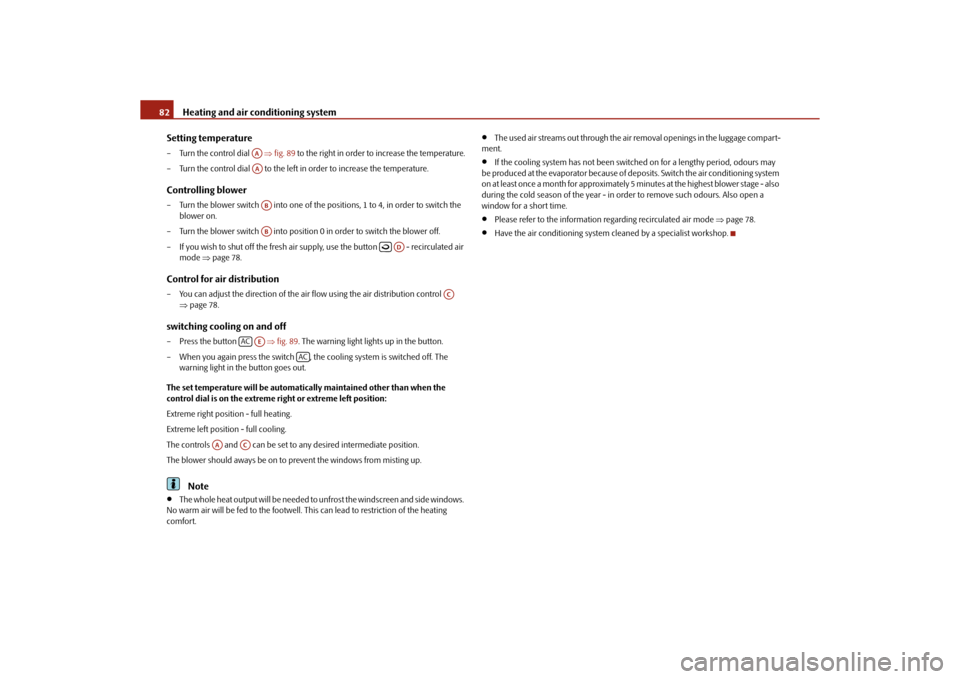
Heating and air conditioning system
82
Setting temperature
– Turn the control dial fig. 89 to the right in order to increase the temperature.
– Turn the control dial to the left in order to increase the temperature.Controlling blower– Turn the blower switch into one of the po sitions, 1 to 4, in order to switch the
blower on.
– Turn the blower switch into position 0 in order to switch the blower off.
– If you wish to shut off the fresh air supp ly, use the button - recirculated air
mode page 78.Control for air distribution– You can adjust the direction of the air flow using the air distribution control
page 78.switching cooling on and off– Press the button fig. 89 . The warning light lights up in the button.
– When you again press the switch , the cooling system is switched off. The warning light in the button goes out.
The set temperature will be automatically maintained other than when the
control dial is on the extreme right or extreme left position:
Extreme right position - full heating.
Extreme left position - full cooling.
The controls and can be set to any desired intermediate position.
The blower should aways be on to prevent the windows from misting up.
Note
The whole heat output will be needed to unfrost the windscreen and side windows.
No warm air will be fed to the footwell. This can lead to restriction of the heating
comfort.
The used air streams out through the air removal openings in the luggage compart-
ment.
If the cooling system has not been switched on for a lengthy period, odours may
be produced at the evaporator because of de posits. Switch the air conditioning system
on at least once a month for approximately 5 minutes at the highest blower stage - also
during the cold season of the year - in order to remove such odours. Also open a
window for a short time.
Please refer to the information regarding recirculated air mode page 78.
Have the air conditioning system cleaned by a specialist workshop.
AAAAABAB
AD
AC
AC
AE
AC
AA
AC
s16g.4.book Page 82 Wednesda y, February 10, 2010 3:53 PM
Page 84 of 231

Heating and air conditioning system83
Using the system
Safety
Driving Tips
General Maintenance
Breakdown assistance
Praktik
Technical Data
Set ClimaticRecommended settings of Climatic controls for the respective operating modes:
Note
We recommend that you leave the air outlet vents 3 page 78, fig. 87 in the opened
position.
Setup
Setting of the control dial
Button
Air outlet vents 4
Defrosting the windscreen and
side windows
recommended 22°C
3
Do not switch on
Switched off
Open and align with the side
window
Free windscreen and side win-
dows from mist
Desired tempera-ture
2
Do not switch on
switched on
Open and align with the side window
The fastest heating
recommended 22°C
3
briefly switched on
Switched off
Opening
Comfortable heating
Desired tempera-ture
2 or 3
Do not switch on
Switched off
Opening
the fastest cooling
recommended 22°C
briefly4, then 2or
3
briefly switched on
switched on
Opening
optimal cooling
Desired tempera-ture
1, 2 or 3
Do not switch on
switched on
open and align to the roof
Fresh air mode - ventilation
To the left up to the stop
Desired position
Do not switch on
Switched off
Opening
AA
AB
AC
AD
AE
s16g.4.book Page 83 Wednesda y, February 10, 2010 3:53 PM
Page 85 of 231

Heating and air conditioning system
84
Using the air conditioning system economicallyThe compressor on the Climatic uses powe r from the engine when in cooling mode
which will effect the fuel consumption.
It recommended to open the windows or the doors of a vehicle for which the interior
has been strongly heated through the effect of direct sunlight in order to allow the
heated air to escape.
The cooling system should not be switched on while travelling when the window is
open.
The desired interior temperature can also be achieved without switching in the cooling
system just by switching to fresh air mode.
For the sake of the environment
When you economize on fuel, you also reduce pollutant emissions.Operational malfunctionsIf the cooling system does not operate at outside temperatures higher than +5 °C,
there is a problem in the system. The reasons for this may be:
The fuse of the Climatic is defective. Check the fuse, replace it if necessary
page 191.
The cooling system has switched off automatically for a short time because the
coolant temperature of the engine is too hot page 16.
If you are not able to rectify the operational problem yourself, or if the cooling capacity
decreases, switch the cooling system off. Contact a specialist garage.
Climatronic* (automatic air conditioning)Description
The Climatronic system is a combinat ion of an automatic heating, fresh
air and cooling system which provides optimal comfort for the occu-
pants of the car.The Climatronic maintains a constant temperat ure fully automatically, once it has been
set. This is achieved by automatically varying the temperature of the outflowing air, the
blower stages and the air distribution. The system also takes into account sunlight
which eliminates the need to alter the settings manually. The automatic mode
page 86 ensures maximum wellbeing of the occupants at all times of the year.
Description of Climatronic system
The cooling operates only if the following conditions are met:
engine running,
outside temperature above approx. +2°C,
switched on.
If the cooling system is switched on, th e temperature and air humidity drops in the
vehicle. The wellbeing of the occupants of the car is enhanced as a result of this partic-
ularly at high outside temperatures and a high air humidity. The system prevents the
windows misting up during the cold season of the year.
The heating effect is dependent upon the coolant temperature, thus full heat output
only occurs when the engine has reached its operating temperature.
It is possible to briefly activate recirculat ed air mode in order to enhance the cooling
effect .
The air inlet in front of the windscreen must be free of ice, snow or leaves in order to
ensure that the heating and cooling systems operate properly.
The AC compressor is switched off at a high coolant temperature in order to provide
cooling at a high load of the engine.
After switching on the cooling Condensation from the evaporator of the air condi-
tioning may drip down and form a puddle be low the vehicle. This is quite normal and
not an indication of a leak!AC
s16g.4.book Page 84 Wednesda y, February 10, 2010 3:53 PM
Page 86 of 231

Heating and air conditioning system85
Using the system
Safety
Driving Tips
General Maintenance
Breakdown assistance
Praktik
Technical Data
Recommended setting for all periods of the year:
Set the desired temperature, we recommend 22°C (72°F).
Press the button
fig. 90 .
Move the air outlet vents 3 and 4, so that the air flow is directed slightly upwards
page 78, fig. 87 .
Switching over between degrees Celsius and degrees Fahrenheit
Press and hold the buttons and fig. 90 at the same time. The information
in the desired temperature measuring unit appears in the display.
WARNING
For your own safety and that of other road users, ensure that all the
windows are free of ice, snow and mistin g. Please familiarize yourself about
how to correctly operate th e heating and ventilation systems, how to demist
and defrost the windows, as well as with the cooling mode.
You should not leave recirculated air mode on over a longer period of time,
as “stale” air may result in fatigue in the driver and occupants, divert your
attention and also cause the windows to mist up. The risk of having an accident
increases. Switch recirculated air mode off as soon as the windows begin
misting up.Note
If the cooling system has not been switched on for a lengthy period, odours may
be produced at the evaporator because of deposits. Switch the cooling system on at
least once a month for approximately 5 minut es at the highest blower stage - also
during the cold season of the year - in order to remove such odours. Also open a
window for a short time.
We recommend that you do not smoke in the vehicle when the recirculating air
mode is operating since the smoke which is drawn at the evaporator from the interior
of the vehicle forms deposits in the evapor ator of the air conditioning system. This
produces a permanent odour when the air co nditioning system is operating which can
only be eliminated through considerable effort and expense (replacement of
compressor).
The used air streams out through the air removal openings in the luggage compart-
ment.
Using the cooling economically page 84.
Operational problems page 84.
Overview of the control elementsFig. 90 Climatronic: Control elementsButtons / control dial
Setting the interior temperature
The displays Selected interior temperature, e.g. +22°C (72°F)
Degrees Celsius or Fahrenheit
Automatic air conditioning mode
De-mist or de-ice the windscreen
Air flow to the windscreen, head, upper body and feet
Recirculated air mode
Air conditioning sy stem switched on
Set blower speed
Buttons / control dial Setting the blower speed
Interior temperature sensor
Automatic mode
AUTO
AUTO
AC
A1A2A3A4A5A6A7A8A9A10A11A12
s16g.4.book Page 85 Wednesda y, February 10, 2010 3:53 PM
Page 87 of 231

Heating and air conditioning system
86De-mist or de-ice the windscreen
Air flow to the windows
Air flow to head
Air flow in the footwell
Recirculated air mode
Air conditioning system switched onNote
The interior temperature sensor is locate d in the bottom part of the device. Do not
glue or cover over the sensor, otherwise it could have an unfavourable effect on the
Climatronic.Automatic mode
The automatic mode is used in order to maintain a constant tempera-
ture and to demist the windows in the interior of the car.Switching automatic mode on– Set a temperature between +18°C (64 °F) and +29°C (86 °F).
– Move the air outlet vents 3 and 4 page 78, fig. 87 , so that the air flow is directed
slightly upwards.
– Press the button , AUTO appears in the display.
The automatic mode is switched off by pressing the button for the air distribution or
increasing or decreasing the blower speed. The temperature is nevertheless
regulated.Defrosting windscreenDefrosting windscreen - switching on– Press the button page 85, fig. 90 .Defrosting windscreen - switching off– Once again press the button or the button . The temperature control is controlled automatically. More air flows out of the air outlet
vents
1 and 2.
Setting temperature– You can set the desired interior temperature after switching on the ignition with the
control dial .
You can set the interior temperature betw een +18°C (64°F) and +29°C (86 °F). The
interior temperature is regulated automatica lly within this range. If you select the
temperature below +18°C (64°F), “LO” appears in the display. If you select the temper-
ature higher than +29°C (86°F), “HI” appears in the display. In both limit positions the
Climatronic operates at ma ximum cooling or heating capacity, respectively. The
temperature is not controlled in this case.
Lengthy and uneven distribution of the air flow out of the vents (in particular at the leg
area) and large differences in temperature, for example when getting out of the vehicle,
can result in chills in sensitive persons.Controlling blower
There are a total of seven blower stages available.The Climatronic system controls the blower st ages automatically in line with the inte-
rior temperature. You can also, however, adap t the blower stages manually to suit your
particular needs.
– Turn the control dial page 85, fig. 90 to the left (reduce blower speed) or right
(increase blower speed).
If you switch off the blower, th e Climatronic is switched off.
WARNING
“Stale air” may result in fatigue in the driver and occupants, reduce atten-
tion levels and also cause the windows to mist up. The risk of having an accident
increases.
Do not switch the Climatronic system off for longer than necessary.
Switch the Climatronic system on as soon as the windows mist up.
A13A14A15A16A17A18
A11
AUTO
AUTO
A1
A10
s16g.4.book Page 86 Wednesda y, February 10, 2010 3:53 PM
Page 88 of 231

Starting-off and Driving87
Using the system
Safety
Driving Tips
General Maintenance
Breakdown assistance
Praktik
Technical Data
Starting-off and DrivingSetting steering wheel positionFig. 91 Adjustable steering wheel: Lever be low the steering column / Safe distance to
steering wheelYou can set the height and the forward/back position of the steering wheel to the
desired position.
– Adjust the driver seat page 57.
– Pull the lever below the steering column fig. 91 down .
– Set the steering wheel to the desired position (concerning height and forward/back position).
– Then push the lever up against the steering column until it locks into place.
WARNING
You must not adjust the steering wheel when the vehicle is moving!
The driver must maintain a distance of at least 25 cm to the steering wheel
fig. 91 on the right. Not maintaining this minimum distance will mean that
the airbag system will not be able to properly protect you - hazard!
For safety reasons the lever must always be firmly pushed up to avoid the
steering wheel altering its po sition unintentionally when driving - risk of acci-
dent!
If you adjust the steering wheel furthe r towards the head, you will reduce
the protection offered by the driver airbag in the event of an accident. Check
that the steering wheel is aligned to the chest.
When driving, hold the steering wheel with both hands firmly on the outer
edge in the 9 o'clock and 3 o'clock position. Never hold the steering wheel
firmly in the 12 o'clock position or in another way (e.g. in the middle of the
steering wheel or at the inne r steering wheel edge). In such cases, injuries to the
arms, the hands and the head can occur when the driver airbag is deployed.
Ignition lockPetrol engines
- ignition switched off, engine off
- ignition switched on
- start engine
Diesel engines - interruption of fuel supply, ignition swit ched off, engine off, the steering can be
locked.
- heating glow plugs on, ignition switched on
WARNING (continued)
Fig. 92 Ignition lock positions
A1A2A3A1A2
s16g.4.book Page 87 Wednesda y, February 10, 2010 3:53 PM
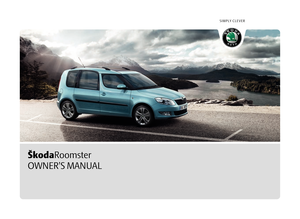 1
1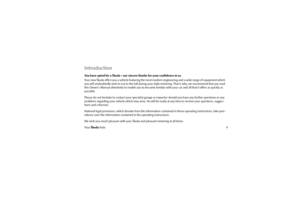 2
2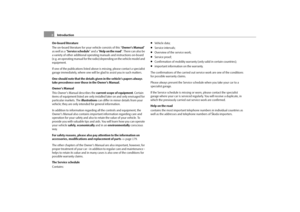 3
3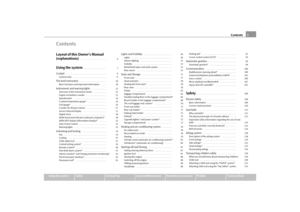 4
4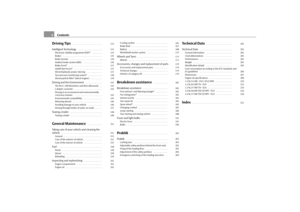 5
5 6
6 7
7 8
8 9
9 10
10 11
11 12
12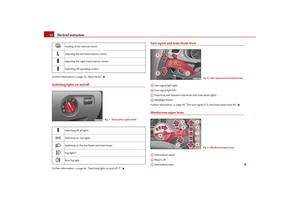 13
13 14
14 15
15 16
16 17
17 18
18 19
19 20
20 21
21 22
22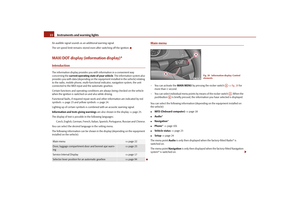 23
23 24
24 25
25 26
26 27
27 28
28 29
29 30
30 31
31 32
32 33
33 34
34 35
35 36
36 37
37 38
38 39
39 40
40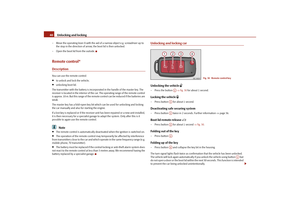 41
41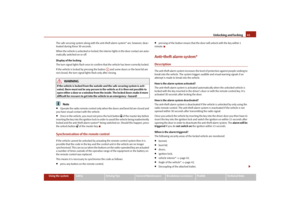 42
42 43
43 44
44 45
45 46
46 47
47 48
48 49
49 50
50 51
51 52
52 53
53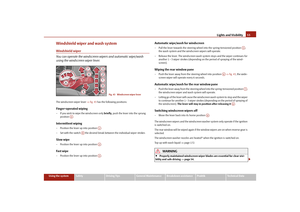 54
54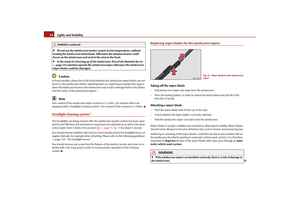 55
55 56
56 57
57 58
58 59
59 60
60 61
61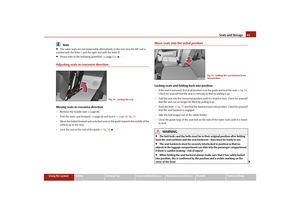 62
62 63
63 64
64 65
65 66
66 67
67 68
68 69
69 70
70 71
71 72
72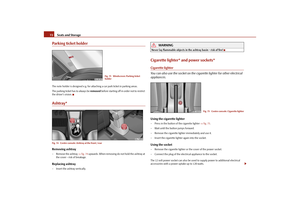 73
73 74
74 75
75 76
76 77
77 78
78 79
79 80
80 81
81 82
82 83
83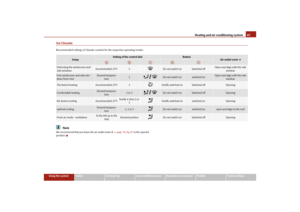 84
84 85
85 86
86 87
87 88
88 89
89 90
90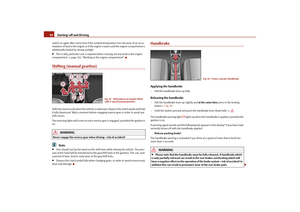 91
91 92
92 93
93 94
94 95
95 96
96 97
97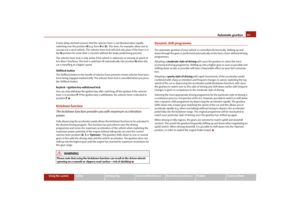 98
98 99
99 100
100 101
101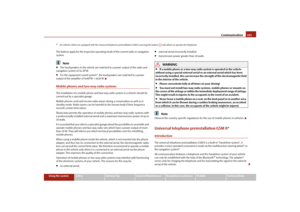 102
102 103
103 104
104 105
105 106
106 107
107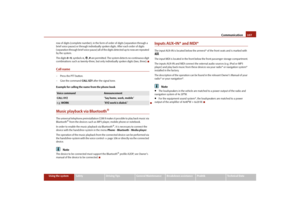 108
108 109
109 110
110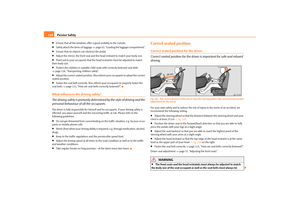 111
111 112
112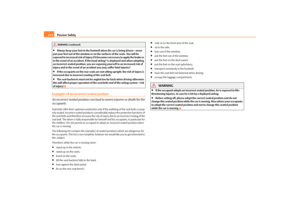 113
113 114
114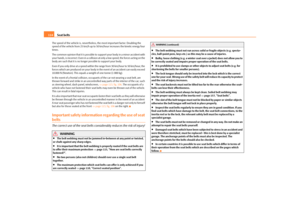 115
115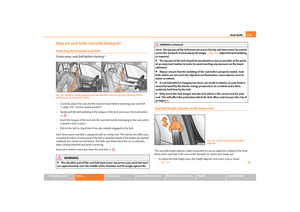 116
116 117
117 118
118 119
119 120
120 121
121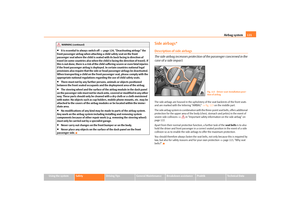 122
122 123
123 124
124 125
125 126
126 127
127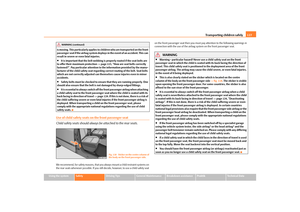 128
128 129
129 130
130 131
131 132
132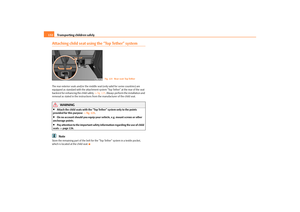 133
133 134
134 135
135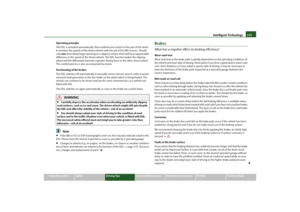 136
136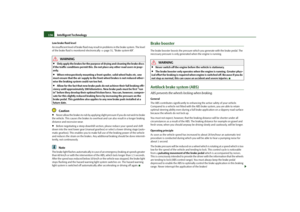 137
137 138
138 139
139 140
140 141
141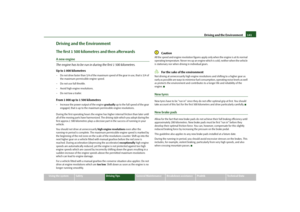 142
142 143
143 144
144 145
145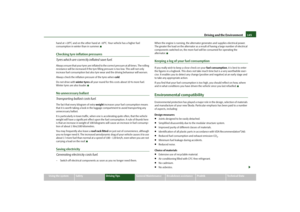 146
146 147
147 148
148 149
149 150
150 151
151 152
152 153
153 154
154 155
155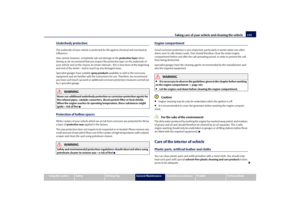 156
156 157
157 158
158 159
159 160
160 161
161 162
162 163
163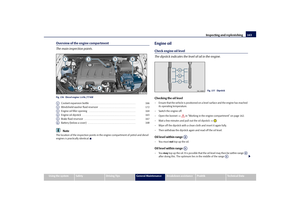 164
164 165
165 166
166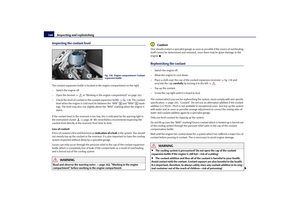 167
167 168
168 169
169 170
170 171
171 172
172 173
173 174
174 175
175 176
176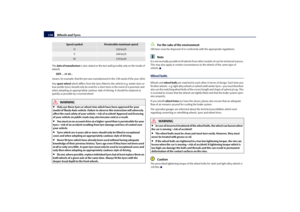 177
177 178
178 179
179 180
180 181
181 182
182 183
183 184
184 185
185 186
186 187
187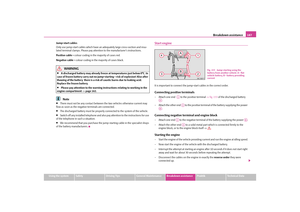 188
188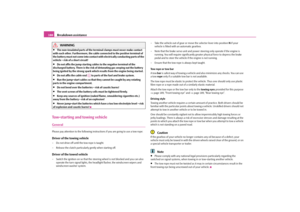 189
189 190
190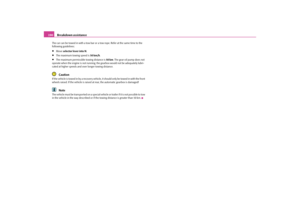 191
191 192
192 193
193 194
194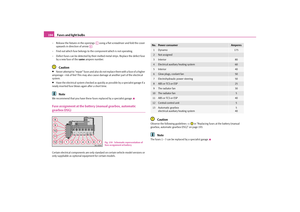 195
195 196
196 197
197 198
198 199
199 200
200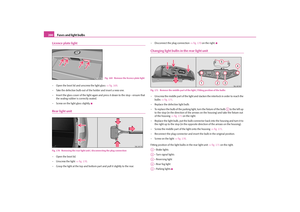 201
201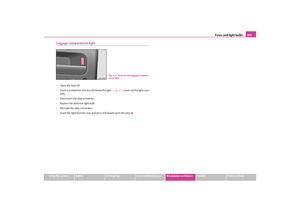 202
202 203
203 204
204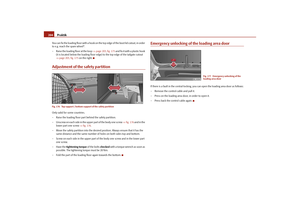 205
205 206
206 207
207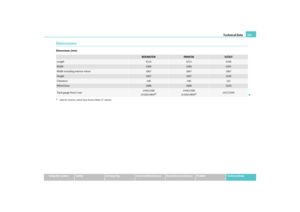 208
208 209
209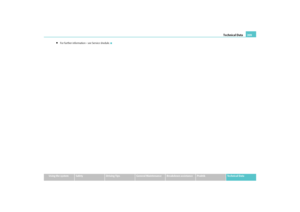 210
210 211
211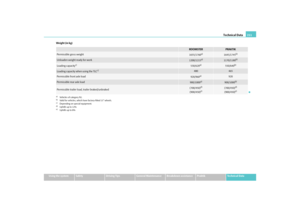 212
212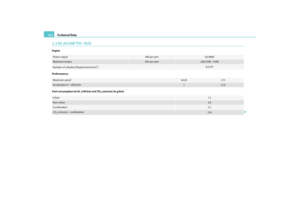 213
213 214
214 215
215 216
216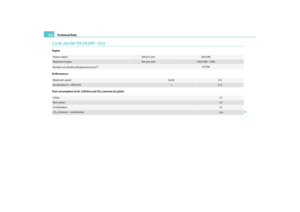 217
217 218
218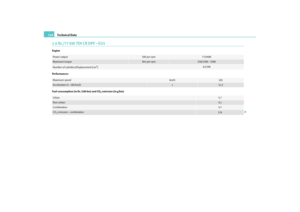 219
219 220
220 221
221 222
222 223
223 224
224 225
225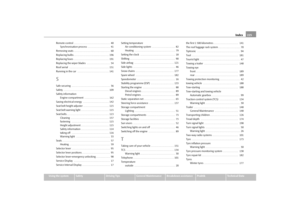 226
226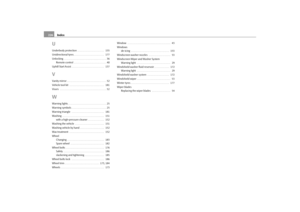 227
227 228
228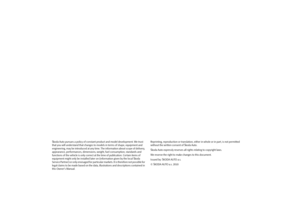 229
229 230
230






